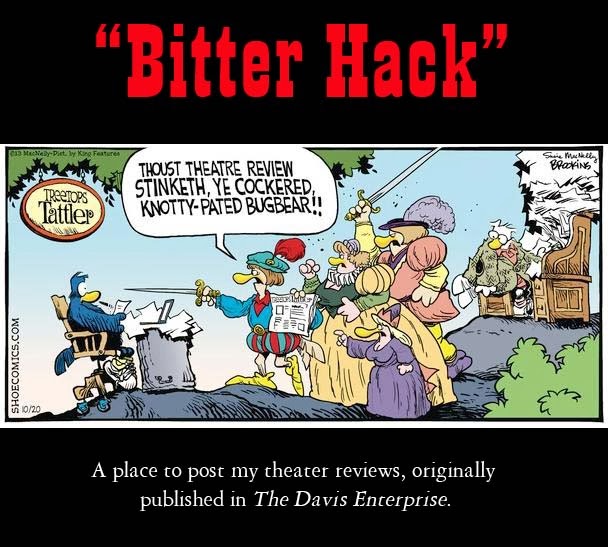 |
| The
company of the national tour of PIPPIN presented by Broadway Sacramento at the Sacramento Community Center Theater Dec. 29, 2015 – Jan. 3, 2016. Photo by Terry Shapiro. |
“Pippin.” Is it a musical? A magic show? An acrobatic show? Something akin to Cirque du Soleil?
Well … yes to everything.
This 2013 Tony award-winning revival of the original 1972 Broadway hit by Stephen Schwartz and Roger O. Hirson with choreography by Bob Fosse, is now at the Sacramento Community Center. It’s the 1972 original on steroids, thanks to director Diane Paulus and choreographer Chet Walker, who admits his work is a tribute to Fosse.
The book on its own is not particularly interesting. Pippin is the son of Charlemagne (“Charles” in this production), who has just graduated from university, educated and on a quest to find meaning for his existence. In the original, Pippin’s journey was a play within a play of a touring theatrical group with clown-like performers.
In this most-nominated Broadway show of 2013, the stage is literally a three-ring circus, with breathtaking non-stop acrobatics, amazing magic tricks, and puzzling sleight-of-hand effects which pass by so quickly you hardly realize what’s happening. The non-stop motion is thanks to Gypsy Snider, co-founder of “Les 7 doigts de la main,” a Montreal-based circus company.
Perhaps the most remarkable thing about this production is that the actors become acrobats and the acrobats become singers. Someone delivers a house-shattering solo and suddenly is twirling several feet above the stage, someone else has been doing somersaults overhead and suddenly is on the stage singing in a marvelous voice. It’s impossible to determine which are strictly actors and which are strictly circus performers.
Gabrielle McClinton is the Leading Player, who has played the role on Broadway. This seductive carnival barker leads Pippin from world to world as he tries to find the extraordinary, her real agenda not fully displayed until the end when she offers him the ultimate opportunity for glory. McClinton is an accomplished singer and dancer and her performance is snappy, physical and amazing to watch.
The title role is played by Brian Flores, making his professional theater debut with this production. He is innocent and engaging, has a great voice, and can climb a rope or leap off into waiting arms with the best of them. As Pippin, he tries war, sex, political revolution and ordinary domesticity in his search for something “completely fulfilling.”
Daddy Charles is played by John Rubinstein, who actually originated the role of Pippin in 1972. No doddering old man, this Charles, whose favorite response to any request is: “Denied!” He’s a despotic ruler, who feels his youngest son Lewis (Erik Altemus, who originated the role on Broadway) is an idiot, though his love for Pippin is strong.
Lewis’ mother Fastrada (Kate Wesler) is Charles’ trophy wife and, dressed in the brilliant costumes of Dominique Lemieux, her “trophies” have never been better displayed. She is ambitious for her son, though sometimes it seems like more intimate than a mother/son relationship.
A real surprise is Pippin’s grandmother, Berthe (Sabrina Harper), exiled from the Charles’ court. Her number, “No time at all,” may be the most surprising of the show, but to describe it would be to spoil the surprise. Suffice to say, it is quite memorable.
The widowed Catherine (Bradley Benjamin) is offered to Pippin to give him a taste of domestic life. Her son Theo was played on opening night by Jake Berman, who shares the role with Ben Krieger. Catherine’s growing love for Pippin is frightening to him because she is nothing “extraordinary” and he must find something extraordinary for his life.
This is an evening of razzle dazzle from the start, a sumptuous marriage of circus and simple musical story. In the end, it is a show you will never forget.


